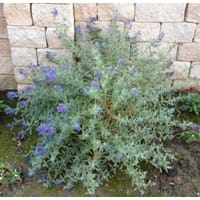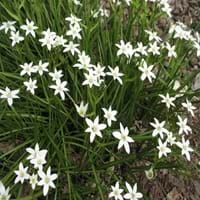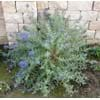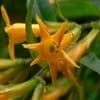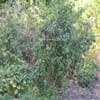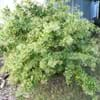Life Span
Perennial
Perennial
Type
Shrub
Bulb or Corm or Tuber
Origin
China, Japan
Eastern Europe, Southern Europe, Turkey
Types
Not Available
Not Available
Habitat
Well Drained
Cultivated Beds, meadows
USDA Hardiness Zone
6-9
5-8
Sunset Zone
4, 5, 6, 7, 8, 9, 14, 15, 16, 17, 18, 19, 20, 21, 22, 23, 24
21,22
Habit
Oval or Rounded
Clump-Forming
Minimum Width
Not Available
Flower Color
Blue Violet
White, Light Green, Silver
Flower Color Modifier
Not Available
Bicolor
Fruit Color
Non Fruiting Plant
Not Available
Leaf Color in Spring
Gray Green
Green
Leaf Color in Summer
Gray Green
Light Green
Leaf Color in Fall
Gray Green
Several shades of Green
Leaf Color in Winter
Not Available
Light Green
Leaf Shape
Rhomboid
Oblong-lanceolate
Plant Season
Summer, Fall
Spring
Sunlight
Full Sun
Full Sun, Partial Sun, Partial shade
Type of Soil
Loam, Sand
Clay, Loam, Sand
The pH of Soil
Acidic, Neutral
Acidic, Neutral, Alkaline
Soil Drainage
Well drained
Well drained
Bloom Time
Late Summer, Early Fall
Early Spring, Spring
Tolerances
Drought
Drought
Where to Plant?
Ground, Pot
Container, Ground, Pot
How to Plant?
Cuttings, Rooted stem cutting
Seedlings
Plant Maintenance
Medium
Medium
Watering Requirements
Needs less watering, Water Deeply
Average Water Needs
In Summer
Lots of watering
Lots of watering
In Spring
Moderate
Moderate
In Winter
Average Water
Average Water
Soil pH
Acidic, Neutral
Acidic, Neutral, Alkaline
Soil Type
Loam, Sand
Clay, Loam, Sand
Soil Drainage Capacity
Well drained
Well drained
Sun Exposure
Full Sun
Full Sun, Partial Sun, Partial shade
Pruning
Remove damaged leaves, Remove dead branches, Remove dead flowers, Remove dead leaves, Remove dead or diseased plant parts, Remove deadheads
No pruning needed
Fertilizers
All-Purpose Liquid Fertilizer, Apply N-P-K
Water soluble fertilizers
Pests and Diseases
bees, Red blotch, Whiteflies
No serious insect or disease problems
Plant Tolerance
Drought, Drought and Wet Site, Variety of soil types
Drought
Flower Petal Number
Single
Single
Foliage Texture
Medium
Medium
Foliage Sheen
Matte
Glossy
Attracts
Butterflies
Insects
Allergy
Not Available
Dermatitis, Poisonous to grazing animals
Aesthetic Uses
Beautification, Ornamental use, Showy Purposes
Beautification, Showy Purposes
Beauty Benefits
Not Available
Not Available
Environmental Uses
Air purification
Air purification
Medicinal Uses
Not Available
Certain forms of cancer, Homeopathy
Part of Plant Used
Not Available
Root
Other Uses
Used as Ornamental plant
Used As Food
Used As Indoor Plant
No
Yes
Used As Outdoor Plant
Yes
Yes
Garden Design
Foundation, Mixed Border
Alpine, Container, Mixed Border, Rock Garden / Wall
Botanical Name
CARYOPTERIS incana
ORNITHOGALUM balansae
Common Name
bluebeard
you shu
Star-of-Bethlehem
In Hindi
Bluebeard
Star-of-Bethlehem
In German
Blaubart
Stern -of- Bethlehem
In French
Bluebeard
Star- de - Bethléem
In Spanish
Barba Azul
Estrella de Belen
In Greek
Κυανοπώγωνα
Star- of- Βηθλεέμ
In Portuguese
Barba Azul
Star of -Bethlehem
In Polish
Sinobrody
Star- of- Betlejem
In Latin
Bluebeard
Star of Bethlehem ,
Phylum
Streptophyta
Magnoliophyta
Class
Not Available
Lilopsida
Family
Verbenaceae
Asparagaceae
Genus
Caryopteris
Ornithogalum
Clade
Angiosperms, Asterids, Eudicots
Angiosperms, Monocots
Tribe
Not Available
Ornithogaleae
Subfamily
Not Available
Ornithogaloideae
Difference Between Bluebeard and Star-of-Bethlehem
If you are confused whether Bluebeard or Star-of-Bethlehem are same, here are some features about those plants to help you choose better. Many people think that these two plants have the same characteristics, but one can see Bluebeard and Star-of-Bethlehem Information and learn more about it. Fertilizers required for proper growth of Bluebeard are All-Purpose Liquid Fertilizer and Apply N-P-K, whereas for Star-of-Bethlehem fertilizers required are Water soluble fertilizers. Hence, one should know the basic difference between Bluebeard and Star-of-Bethlehem if you are planning to have them in your garden to enhance its beauty.
<
Flowering PlantsImportance of Bluebeard and Star-of-Bethlehem
Want to have the most appropriate plant for your garden? You might want to know the importance of Bluebeard and Star-of-Bethlehem. Basically, these two plants vary in many aspects. Compare Bluebeard and Star-of-Bethlehem as they differ in many characteristics such as their life, care, benefits, facts, etc. Every gardener must at least have the slightest clue about the plants he wants to plant in his garden. Compare their benefits, which differ in many ways like facts and uses. The medicinal use of Bluebeard is Not Available whereas of Star-of-Bethlehem is Certain forms of cancer and Homeopathy. Bluebeard has beauty benefits as follows: Not Available while Star-of-Bethlehem has beauty benefits as follows: Not Available.
Compare Facts of Bluebeard vs Star-of-Bethlehem
How to choose the best garden plant for your garden depending upon its facts? Here garden plant comparison will help you to solve this query. Compare the facts of Bluebeard vs Star-of-Bethlehem and know which one to choose. As garden plants have benefits and other uses, allergy is also a major drawback of plants for some people. Allergic reactions of Bluebeard are Not Available whereas of Star-of-Bethlehem have Dermatitis and Poisonous to grazing animals respectively. Having a fruit bearing plant in your garden can be a plus point of your garden. Bluebeard has no showy fruits and Star-of-Bethlehem has no showy fruits. Also Bluebeard is not flowering and Star-of-Bethlehem is not flowering . You can compare Bluebeard and Star-of-Bethlehem facts and facts of other plants too.
